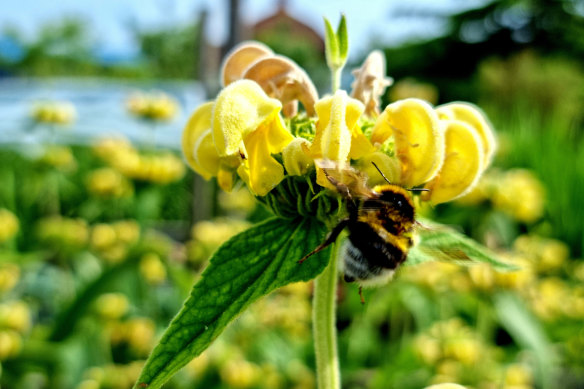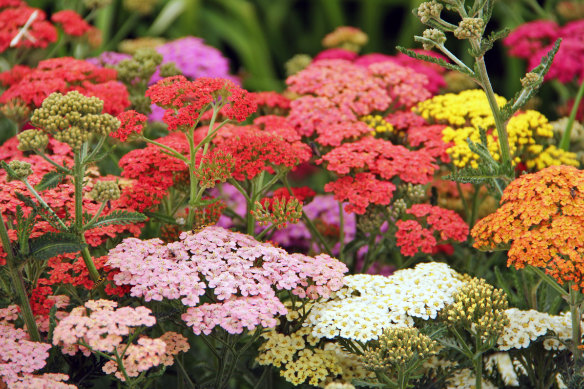In dry conditions, some growers happily sacrifice the presence of perky foliage – of phlomis and some salvias, for example – in exchange for applying minimal or no water, even through the warmest months. The leaves might wilt, but they will pick up again when rain does fall.

Some species like phlomis will survive with minimal water. Just be prepared for a little less foliage.Credit:iStock
When it comes to growing prolific bloomers like achillea, billy buttons and echinacea, you can also opt to water less but get fewer flowers. Some food growers make a similar trade-off, accepting smaller crops in return for not irrigating as much.
But however much water your plants receive, mulching is always a no-brainer. By using an organic material – woodchips, removed plant material or straw – you’re also paving the way for healthier, more airy soil because the mulch will decompose into it. The more coarse-textured and open the mulch, the deeper you can apply it, but about 10 centimetres should be your limit.

Prolific bloomers like achillea can be watered less in exchange for fewer flowers.Credit:iStock
If you have an abundance of grass clippings, and lots of us do thanks to vigorous spring growth, be cautious applying them over the top of beds because they can form dense carpets that are impenetrable to both air and water. Unless the cut grass is as long as straw – when it makes a great mulch – add it to the compost instead.
You can never have too much compost and if you find your pile is attracting flies or getting smelly in the heat, don’t give up but add more “browns”. These can include dried leaves, twigs, wood chips and shredded newspaper but not coffee grounds, which, despite their colour, are, in compost terms, a green, being rich in nitrogen.
Loading
Plant trimmings are also a green, and right now you should be accumulating them fast. It’s the season for clipping hedges, pruning plants (like echiums and euphorbias) that bloomed in late winter and early spring and for deadheading roses to encourage more flowers.
But it is possible to have too much of a floral thing, especially when it comes to volunteer seedlings of enthusiastic self-sowers like scabiosa, valerian and verbascum. Pull the seedlings you don’t want and add them to the compost pile or transplant them elsewhere.
Stay connected with us on social media platform for instant update click here to join our Twitter, & Facebook
We are now on Telegram. Click here to join our channel (@TechiUpdate) and stay updated with the latest Technology headlines.
For all the latest Life Style News Click Here
For the latest news and updates, follow us on Google News.
